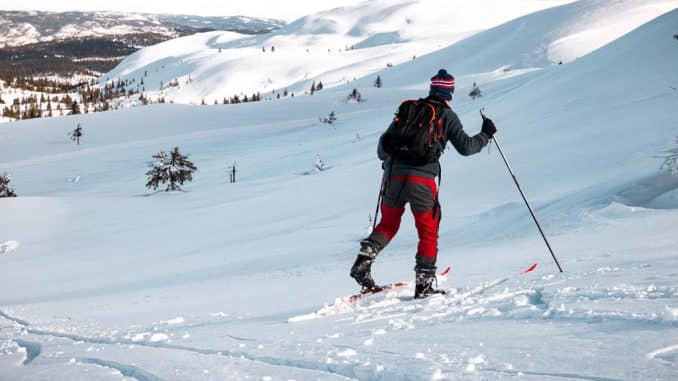
How do you store your ski equipment off-season? Preventative maintenance and proper off-season storage are essential. You can extend the life of your gear and be ready to go when the snow starts falling by following our simple rules for cleaning, preserving, and keeping everything together.
Skis
Skis require different levels of upkeep depending on how much or how hard they’ve been used. Bringing your skis in for a tune-up is the simplest way to get them ready for the off-season. Local ski shop pros have the necessary tools, workspace, and knowledge to complete the task correctly. If you’re a do-it-yourselfer, make sure you follow the manufacturer’s directions as well as the advice below. Take a look at new to skiing how do you choose the right skis?
How do you clean your skis?
Skis should be cleaned with a hose or in the shower (be careful of the tile). With a soft but firm cloth, wipe away any leftover debris and water. Allow the skis to dry naturally.
Remove rust – Using a Gummy stone, Scotch Brite pad, or fine-medium steel wool, carefully remove rust from your ski edges.
Remove old wax – Using a brass, copper, or bronze brush or a plexiglass scraper, brush the base a few times. Use a mild citric solution/base cleaner if necessary.
Apply wax — To guard against moisture and rust, generously apply wax to the base and edges. Although hot waxing is preferred, rub-on waxes can suffice. Liquid waxes should not be used for storage. Before you ski next season, remember to scrape off any extra wax.
Bindings
Experts disagree on how to store bindings during the off-season. Some people recommend lowering the tension in bindings to the lowest setting. This should result in the binding’s life being extended. Others, on the other hand, recommend leaving the bindings alone.
Poles
Connect your poles using a strap or a knot. Poles can be hung, laid, or stood near your skis.
Boots
Ski boots need to be wiped and aired out entirely. Remove the soft inner lining from wet boots and spread them out to dry before re-inserting for storage. Remember to check your boots for cracks, broken buckles, or ripped straps that may need to be repaired or replaced.
Goggles
When the outer lens is dry, carefully wipe it with a soft lens cloth. The inside of the lens should not be touched or wiped. Touching or cleaning the interior of the lens removes and smears the anti-fog coating, causing the goggles to fog up again. If you need to clean the inside of the lens, wipe it gently with a lens towel unless the manufacturer specifies otherwise. Store goggles in a soft protective covering once they’ve been cleaned. The pouch they come in, or better yet, the specific space of a ski boot pack, are both ideal storage options.
Apparel for skiing
All ski apparel should be inspected for damage, washed, and dried thoroughly. It’s better to know this season if something is damaged for warranty and end-of-season sales purposes. When cleaning, make sure to follow the manufacturer’s recommendations because cleaning instructions vary depending on the fabric or material.
Where should I store my skis and equipment during the summer?
Store skis, apparel, and accessories in a cool, dry place away from heat, sunshine, and moisture. The skis, plastics, and fabrics will dry out as a result of the heat. Rust will form on ski edges and other metals if they are exposed to moisture.
Closets, spare rooms, and even under the bed are all excellent storage options
Because they are either too dry, wet, or hot, unfinished attics, basements, or garages should be avoided. Skis should not be stored on concrete floors. Concrete is porous, allowing moisture to escape and corrode ski edges.
Strapping the tips and tails of skis may not be necessary for all skis, although it can help keep the shape of the skis. Strapping the skis together with a non-abrasive material will assist prevent scissoring. Unless the manufacturer specifies differently, do not strap the camber or central regions of the skis.
The skis should be lying flat on their sides with nothing on top of them.
Keep everything in one place and organized
Why would you drop the ball in the off-season if you’re on top of being organised during the season? During the summer, keep your ski gear and apparel organised and in one location. It’s almost more vital to do so in the off-season for sanity’s sake than in the season.



